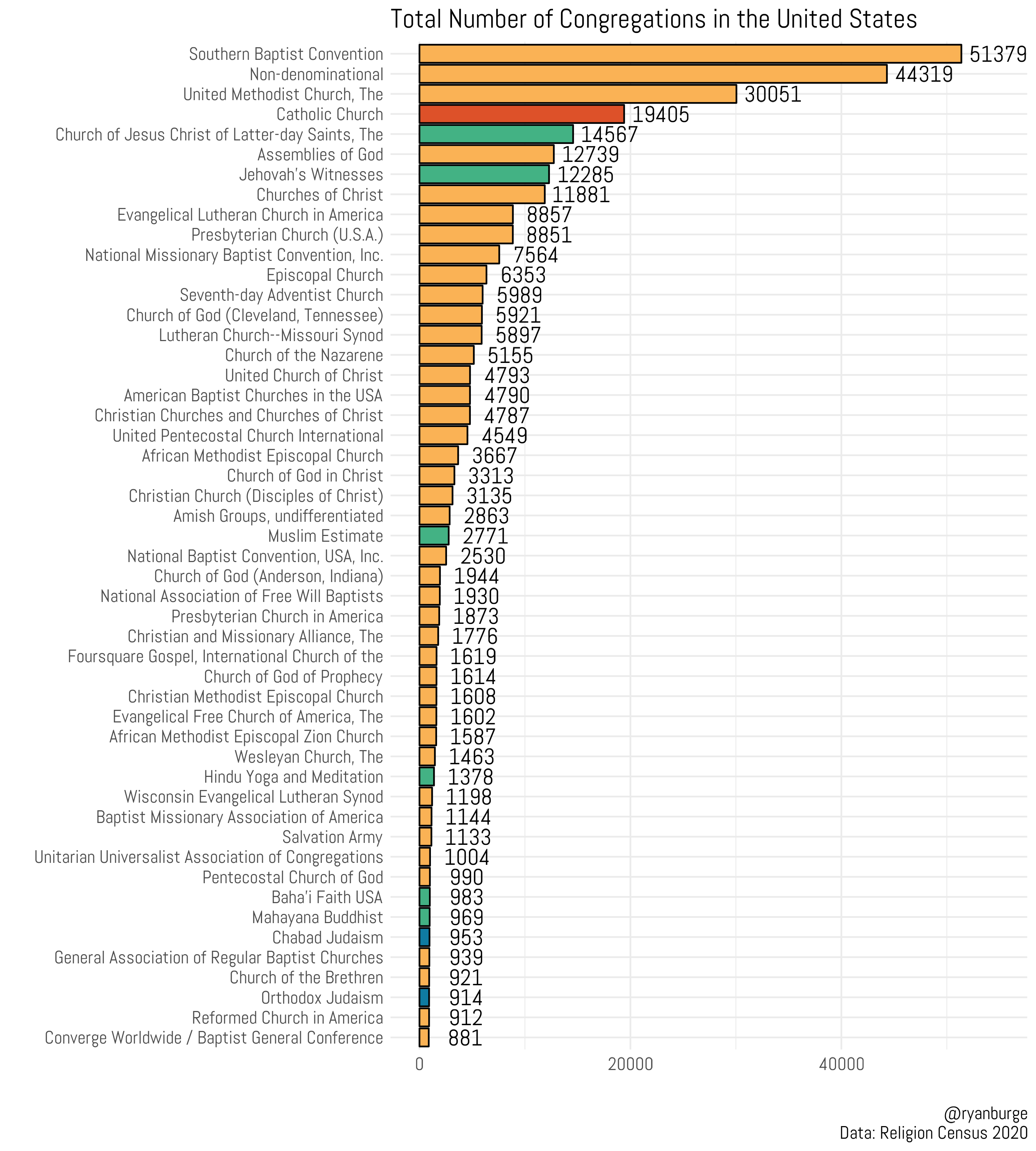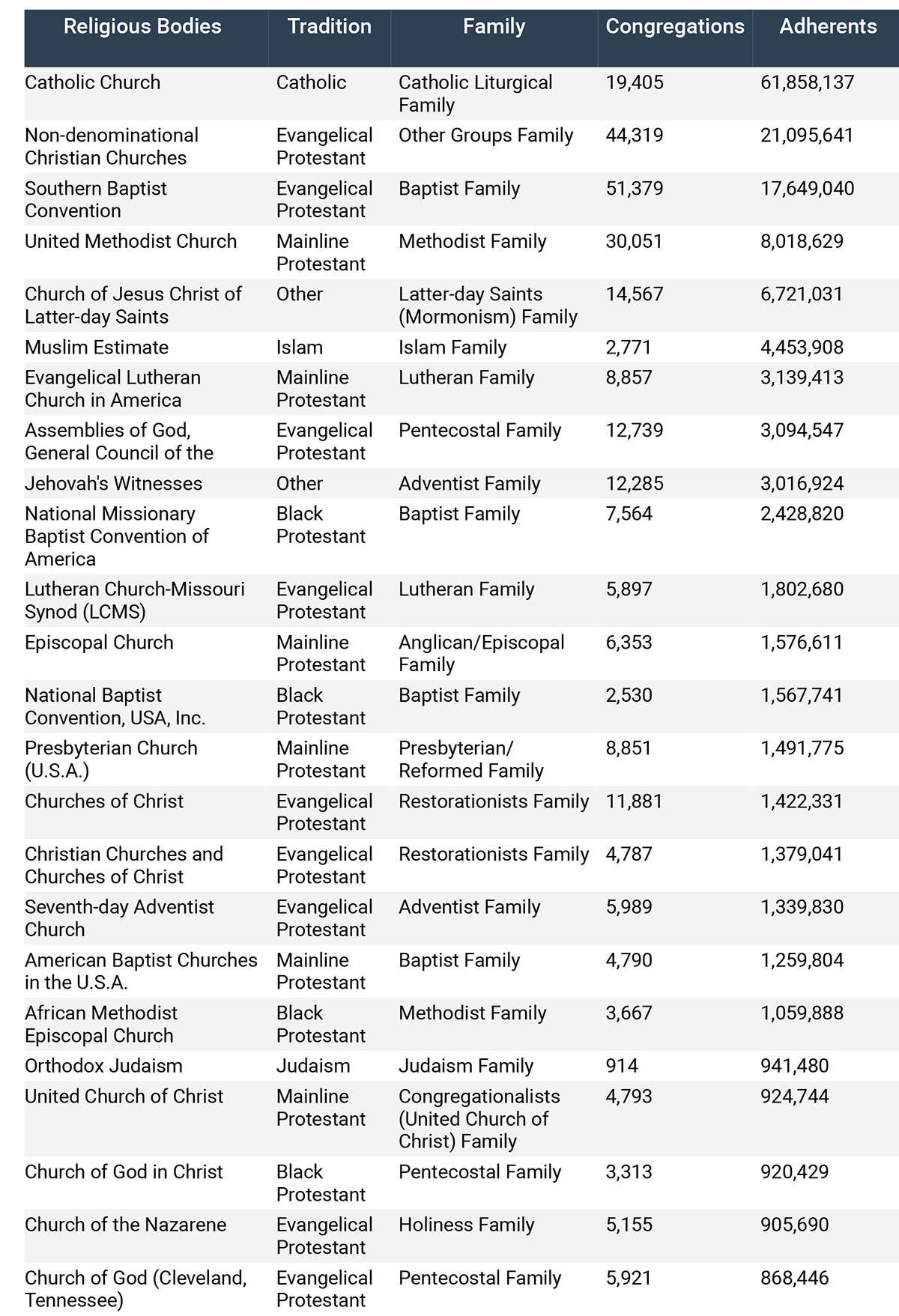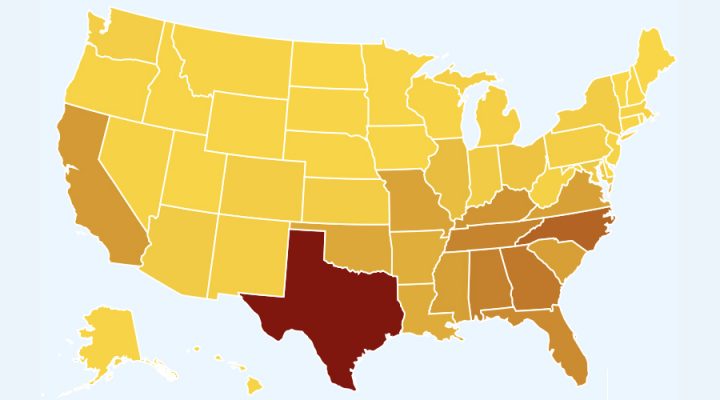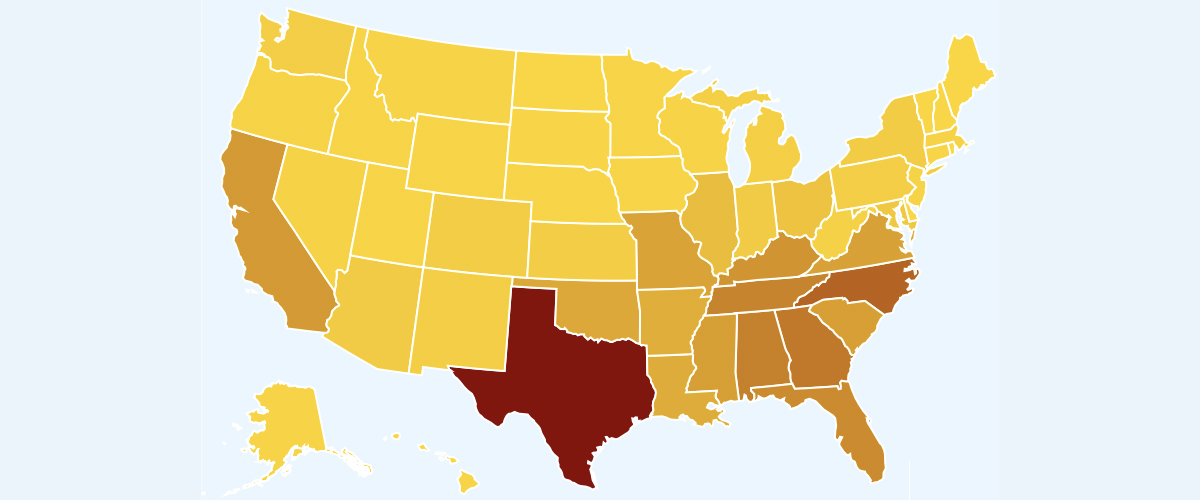If you want to understand why Southern Baptists are in the news so much, one simple chart produced by Ryan Burge might show the answer.

The SBC counts 51,379 congregations in the United States, far more than any other denomination. Showing how many churches exist is not the same as saying how many adherents a faith group has, but the SBC also falls near the top on that measure too.
While the SBC has the largest number of congregations in America, it ranks third in adherents, with about one-fourth the membership of the Roman Catholic Church in America. The largest Protestant group in the nation today, by adherents, is not a denomination at all; it’s the growing group of churches identified as nondenominational. These numbers come from the 2020 Religion Census.
The Catholic Church counts 61.8 million members in 19,405 congregations; nondenominational churches count 21.1 million members in 44,319 congregations, and the SBC counts 17.6 million members in 51,379 congregations.

Those data points illustrate another reality of American religious experience today: Catholic parishes and nondenominational churches tend to be larger than Southern Baptist churches.
Simply dividing the number of adherents into the number of congregations shows Catholic parishes have an average membership of 3,187 people per parish. Membership and attendance are not the same thing, however. Many Catholics, like many Baptists, are “members” of churches they seldom attend.
By comparison, nondenominational churches have an average distribution of 476 members per congregation and Southern Baptists have 344 members per congregation.
If churches were businesses, this data would illustrate the difference between the number of stores a franchise has and the number of customers served. Catholic parishes tend to be higher-volume places of worship than Protestant churches. That’s due, in part, to the fact that Catholic churches typically offer multiple services per week, compared to only one or two weekend services for most Protestant churches.
While there are far more Roman Catholics in America than Southern Baptists, there are far more Southern Baptist churches than Roman Catholic parishes. That physical presence makes a statement in cities and towns across the country — especially when you consider that each church typically has at least one pastor.
“No religious group has more points of sale than Southern Baptists, but no denomination has more customers than the Catholics.”
Again, from a commercial perspective, no religious group has more points of sale than Southern Baptists, but no denomination has more customers than the Catholics.
A more significant trend, however, is the growth of nondenominational churches to nearly rival the SBC in number of congregations and to outpace the SBC in adherents.
The number of nondenominational adherents in America has grown by 75% in the last decade, from 12,241,329 to 21,095,641. The number of nondenominational churches has grown from 35,496 to 44,319.
While the trend of the rise of the “nones” in American life has been well reported — those people who express no religious affiliation — a concurrent trend line is the rise of the “nons,” meaning nondenominationalists.
The influence of the nondenoms is diluted, however, because by definition there is no denomination to represent them. While it is easy to speak of Southern Baptists or Catholics as a bloc — whether accurate or not — there are no national spokespersons for nondenominational churches. Instead, they typically get lumped into the general category of evangelicals.
Measured by number of congregations, the third largest religious body in the United States is the United Methodist Church. Even with the current splintering of churches from the UMC, it easily will remain the third largest group.
In the 2020 census, the UMC had 30,051 churches and 8 million adherents.
Some other interesting facts about religion in America:
- There are more Latter-day Saints than Lutherans.
- There are 12 times more Southern Baptists than Episcopalians.
- All the Baptist groups combined still total less than half the adherents of Roman Catholics.
Related articles:
Less than half of Americans now claim a formal congregational membership
The nondenominationalizing of American Christianity | Opinion by Bill Leonard
Nondenominationalizing American Christianity II: The responses | Opinion by Bill Leonard
In BNG webinar, Ryan Burge details the double threat to denominational churches in America


